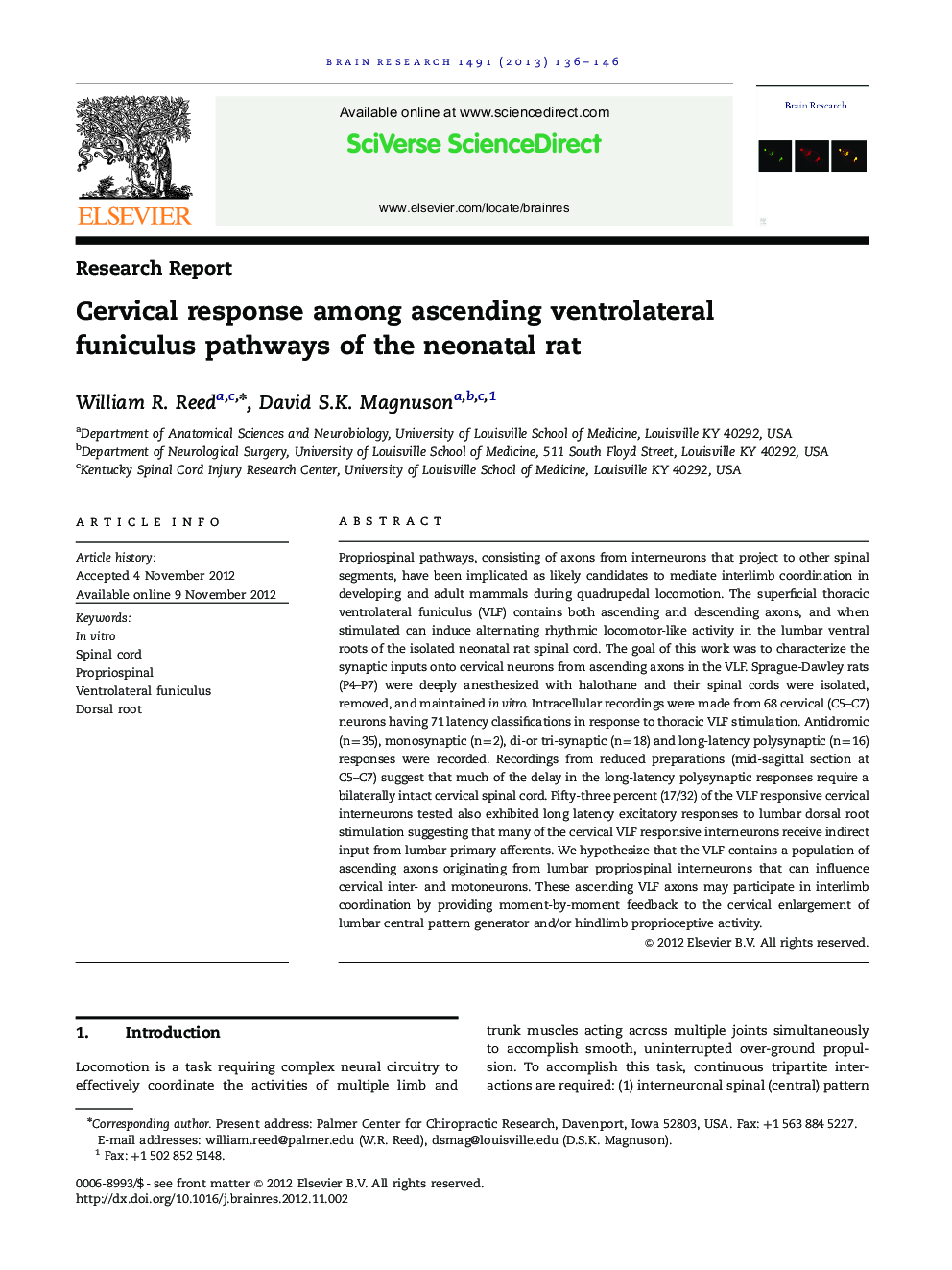| Article ID | Journal | Published Year | Pages | File Type |
|---|---|---|---|---|
| 6264022 | Brain Research | 2013 | 11 Pages |
Propriospinal pathways, consisting of axons from interneurons that project to other spinal segments, have been implicated as likely candidates to mediate interlimb coordination in developing and adult mammals during quadrupedal locomotion. The superficial thoracic ventrolateral funiculus (VLF) contains both ascending and descending axons, and when stimulated can induce alternating rhythmic locomotor-like activity in the lumbar ventral roots of the isolated neonatal rat spinal cord. The goal of this work was to characterize the synaptic inputs onto cervical neurons from ascending axons in the VLF. Sprague-Dawley rats (P4-P7) were deeply anesthesized with halothane and their spinal cords were isolated, removed, and maintained in vitro. Intracellular recordings were made from 68 cervical (C5-C7) neurons having 71 latency classifications in response to thoracic VLF stimulation. Antidromic (n=35), monosynaptic (n=2), di-or tri-synaptic (n=18) and long-latency polysynaptic (n=16) responses were recorded. Recordings from reduced preparations (mid-sagittal section at C5-C7) suggest that much of the delay in the long-latency polysynaptic responses require a bilaterally intact cervical spinal cord. Fifty-three percent (17/32) of the VLF responsive cervical interneurons tested also exhibited long latency excitatory responses to lumbar dorsal root stimulation suggesting that many of the cervical VLF responsive interneurons receive indirect input from lumbar primary afferents. We hypothesize that the VLF contains a population of ascending axons originating from lumbar propriospinal interneurons that can influence cervical inter- and motoneurons. These ascending VLF axons may participate in interlimb coordination by providing moment-by-moment feedback to the cervical enlargement of lumbar central pattern generator and/or hindlimb proprioceptive activity.
⺠Stimulation of VLF elicits short and long latency responses in the cervical cord. ⺠Long latency response delay requires a bilaterally intact cervical spinal cord. ⺠Half of cervical VLF responsive neurons respond to lumbar dorsal root stimulation. ⺠Biocytin labeled VLF axon varicosities were predominately in laminae VII and X. ⺠VLF axons are good candidates to play propriospinal role in interlimb coordination.
